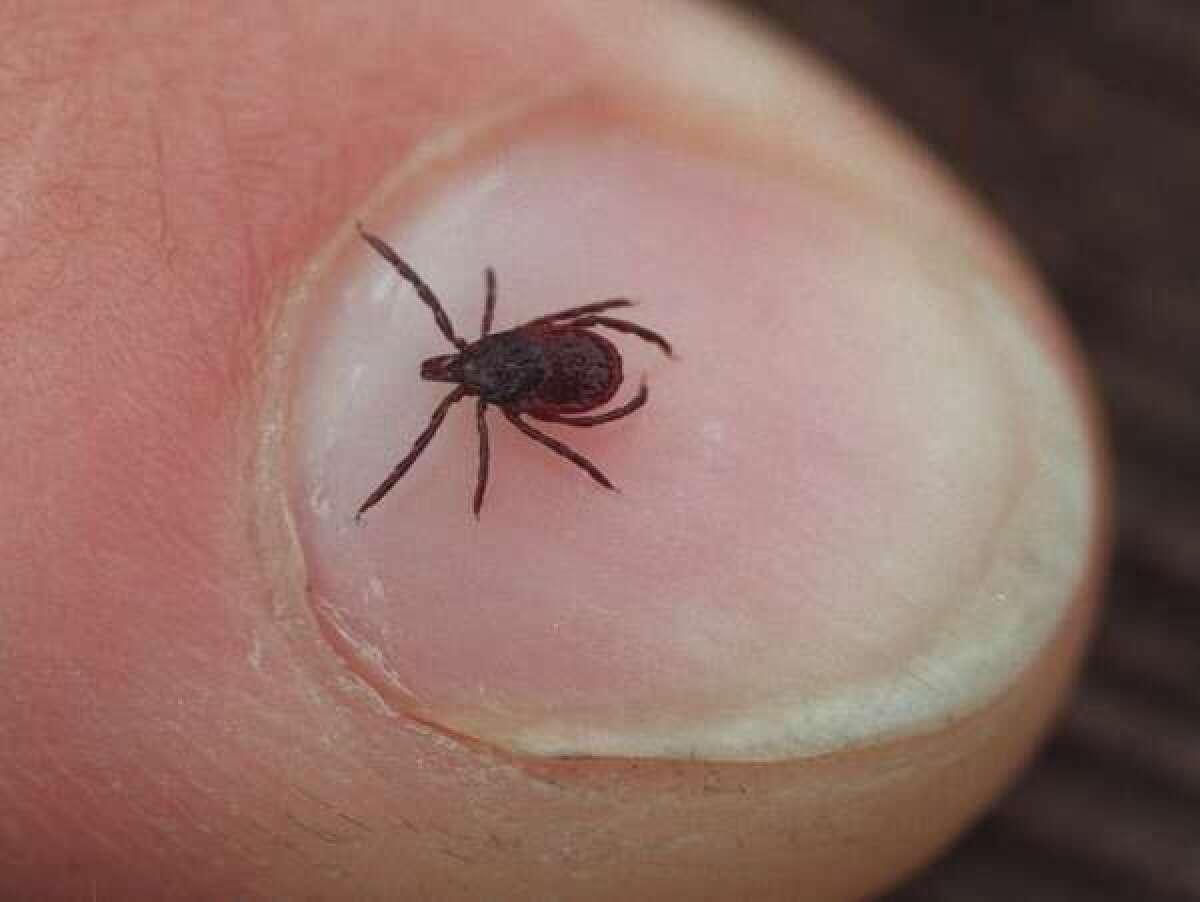New Lyme disease-like infection is on the map in U.S.

Paging Dr. House: There a new tick-transmitted spirochete in town, and this wily relative of the organism that causes Lyme disease is probably sickening more than 4,300 Americans a year with relapsing fevers and flu-like symptoms, according to a new report. The good news: A round of common antibiotics appears capable of vanquishing the newly discovered threat.
The organism, called Borrelia miyamotoi, was discovered in 1995 in Japan, but it was not until 2011 that disease hunters found and described evidence that it was making people sick in Central Russia. The organism was found in deer ticks in Connecticut in 2001 and in Northern California in 2006. So it was only a matter of time before the illness it causes was detected in American patients.
That time has come. The New England Journal of Medicine on Thursday published two reports documenting its arrival on U.S. shores. One is a case study of a confused and unsteady elderly woman stricken by Borrelia miyamotoi; the other reports on a broad sampling of blood from patients in New England, where Lyme disease is widespread, and suggests that Borrelia miyamotoi infection “may be prevalent in areas where Lyme disease is endemic in the United States.”
“We simply don’t know what the actual true number is going to be,” said Yale infectious disease specialist Dr. Peter J. Krause, author of the report that combed through blood samples in New England. His findings suggest Borrelia miyamotoi would be roughly 14% as common as Lyme disease. There are some 30,000 reported cases of Lyme disease a year in the United States, but some estimate that the disease might be 10 times more common than the number of cases that are detected and confirmed by lab tests.
Krause said the observed pattern of illness caused by this strain of Borrelia is not consistent with what many patients report to be chronic neurological symptoms in the wake of a Lyme disease infection.
“This is a very new disease, but none of the patients have had this long-term trouble or other long-term symptoms,” Krause said. But, he added, “it’s possible that we just haven’t seen it yet.”
Krause said that the most distinctive feature of the illness caused by Borrelia miyamatoi is a fever that can burn for a few days and then go away, only to return anywhere from a week to a month later. In people whose immune systems are functioning well, the infection may simply cause flu-like symptoms such as headache, muscle aches, stiff neck and fatigue for several days. Unlike Lyme disease, the infection appears to come with a distinctive rash in only about 10% of cases.
Usually, 10 to 21 days of the antibiotics doxycycline or amoxycillin will prevent recurrences of the fevers, Krause said.
As the case study underscored, Borrelia miyamitoi infection can be more serious in those whose immune systems are compromised by age or illness. In a case study, physicians and researchers from New Jersey and Massachusetts described an 80-year-old New Jersey woman who lived on a farm and over four months had become confused, withdrawn, unsteady and fatigued. The woman, who had survived lymphoma diagnosed in 2005, was regularly exposed to dogs, cats, poultry and field mice and had been treated twice for Lyme disease.
When she was admitted to the hospital, the woman appeared lethargic and uncommunicative, but a spinal tap revealed the cause: Her cerebro-spinal fluid had been colonized by spirochetes of the kind first identified in Japan and more recently, in sick Russian patients.
In the first three to five days that the patient was treated with intraveneous penicillin, her physical and mental condition improved markedly, and after a 30-day regimen, she was back to normal.




